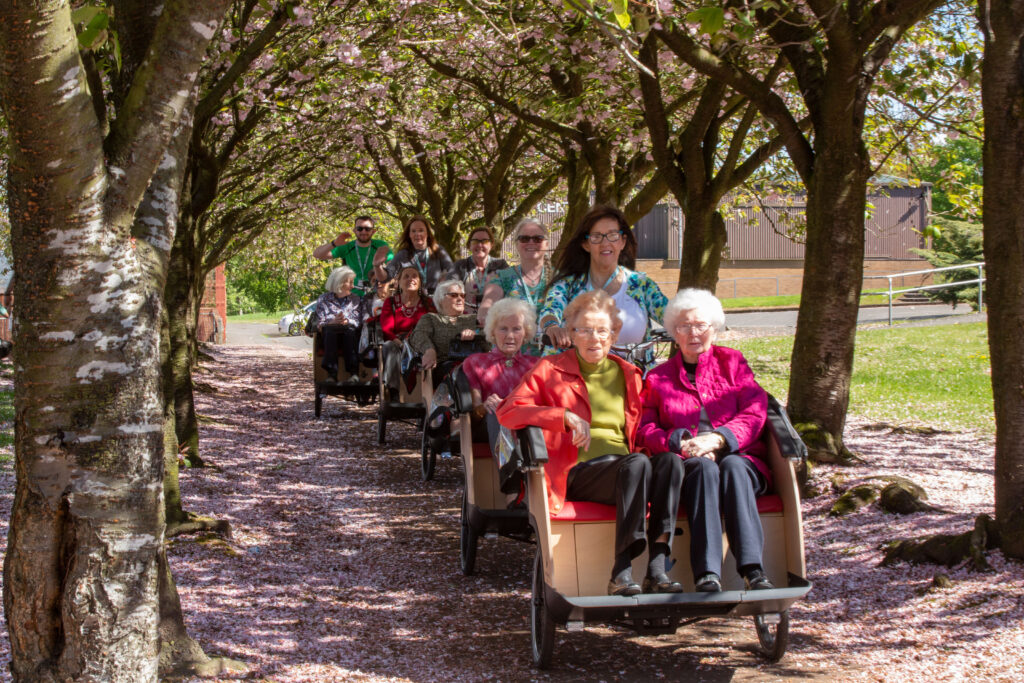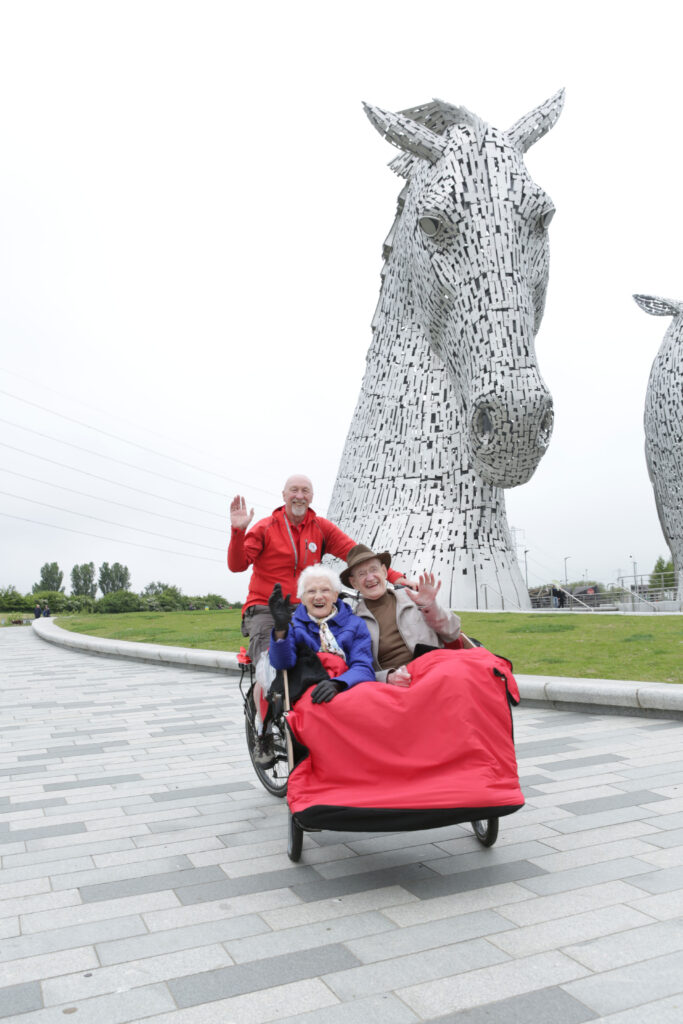Volcanoes are erupting in The Philippines, but on-fire Australia received some welcome rain. The Iran war cries have been called off and The Donald’s military powers are about to be hamstrung by the Senate. Meanwhile, his impeachment trial is starting, and we’re all on Twitter for a front-row seat.
Cycling Away Elderly Loneliness
With manpower from volunteer locals and funds from the Scottish government, Cycling Without Age Scotland is one project fortifying the mental health of those at high risk of loneliness: elder care residents.

On the path next to the River Carron in central Scotland, alongside the dog-walkers, stroller-pushing parents, and runners, you might also catch a more unusual sight: a convoy of specially designed “trishaws,” each transporting one or two local elderly residents with a volunteer pilot powering the pedals.
When they’re out and about, the participants of Cycling Without Age Scotland are hard to miss. They’re sure to be snuggled under bright red blankets, throwing themselves into a collective song, or reciting stories to their fellow passengers.
“It’s lovely,” said one care home resident in the town of Falkirk, Mary McKell, beaming. “It’s nice to get outside into the fresh air, and you’ve got company.”
Even before the Covid-19 lockdowns, which left people around the world feeling isolated, care home residents were at high risk of loneliness and often didn’t have access to the outdoors. One study found that the prevalence of severe loneliness among people living in care homes ranged between 22 and 42 per cent, more than double that of the community population. The numbers of affected are especially concerning considering that over 60-year-olds are set to double globally between 2015 and 2050.
Cycling Without Age, first established in Copenhagen, Denmark, in 2012, was designed to tackle loneliness and put the simple joy of getting outside back into elder care residents’ grasp. The concept has been eagerly snapped up by communities across the world. Today, the organization operates in over 2,500 locations across 50 countries.
When Cycling Without Age Scotland CEO Christine Bell first heard about the Danish initiative in 2016, she instantly saw the potential for it in her own community. After being involved with other local projects, including a successful clean-up of the River Carron, Bell and the team she worked with for the river clean-up were looking for new ways to empower local residents and reconnect them with Scotland’s natural surroundings.
“We knew we wanted to make the promise that we made to the elderly people—that they would get back to the river—a reality,” says Bell.
Cycling Without Age Scotland now has 50 chapters in the country, each of which started as a local community initiative. (It’s up to each community to contact Cycling Without Age Scotland to request trishaws, which better ensures vested interest.) After a successful pilot scheme, the Scottish government pledged to provide an initial £300,000 to set up the project across the country. Today, Scotland is the only country that runs the project through direct government funding, which goes to both general operations as well as research to assess the positive impact of Cycling Without Age on participants’ health, wellbeing, and quality of life.
In 2020, a research team from Heriot-Watt University in Edinburgh attributed that impact to getting outdoors, the sense of freedom a ride can provide, and the building of new friendships.

“There’s growing evidence,” said Professor Alan J. Gow, who led the team, “supporting the ways in which positive social connections and contact might predict better health outcomes with age.”
The project reconnects elderly residents not only with their communities, but also their independence.
“A lot of elderly people who take rides out are blown away by the sense of freedom that they feel,” says Bell.
She recalls one of the very first participants, Jim, refusing to forego a trishaw ride even in the torrential rain. They took a trishaw trip to see a local landmark, the Kelpies—two 30-meter-tall sculptures in the shape of horses’ heads. There, Jim reached for his wallet and insisted on being driven to the kiosk to buy Bell a cup of tea.
She recalled their conversation back at the care home, soaking wet after two hours of riding the trishaw in the typically Scottish weather. After asking if he had enjoyed the trip, Jim had taken her hand and said that it was the first time he had felt alive in 15 years—not just because of the invigorating weather, but because he had been able to decide where he was going and buy his friend a cup of tea, a liberty that had been lost to him since he moved into the care home.


